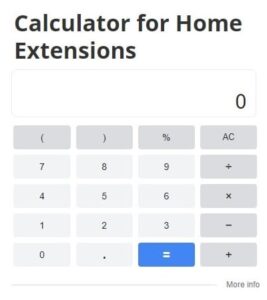
At Home Owners Association, we understand the challenges of estimating renovation costs accurately. Renovating your home can be an exciting yet daunting task, especially when it comes to budgeting.
A reliable home renovation cost estimator can be a game-changer in planning your project. This guide will help you navigate the complexities of cost estimation, ensuring you’re well-prepared for your renovation journey.
Define the Scope of Your Renovation Project
At Home Owners Association, we know that a clear project scope forms the bedrock of accurate cost estimation. Our experience with numerous renovation projects has shown that well-defined parameters lead to successful outcomes.
Prioritize Your Renovation Needs
Create a list of all desired changes for your home. Divide these into ‘must-haves’ and ‘nice-to-haves’. This method helps you concentrate on essential elements and identifies areas where you can potentially reduce costs. For instance, updating your kitchen’s electrical system might be non-negotiable, while a wine fridge installation could wait.
Evaluate Structural Changes
Structural modifications can dramatically affect your renovation budget. These alterations often require professional expertise and may reveal hidden issues. If you plan to remove walls or extend your home, consult a structural engineer early. Their assessment can prevent costly surprises later (and potentially save you thousands).
Navigate Permits and Regulations
Permits and regulations play a significant role in renovation planning. Each Australian state and territory enforces its own building codes and permit requirements. Check with your local council about specific requirements in your area. Failure to obtain necessary permits can result in fines or even force you to undo completed work, so include these costs in your budget from the outset.
Consider Future Needs
Think beyond immediate requirements. Will your family grow? Do you plan to age in place? Anticipating future needs can help you make smart decisions now (and avoid costly modifications later). For example, wider doorways might seem unnecessary today but could prove invaluable if mobility becomes an issue in the future.
Assess Energy Efficiency Upgrades
Energy-efficient renovations can offer long-term savings. Consider upgrades like double-glazed windows, improved insulation, or solar panels. While these might increase your initial costs, they can significantly reduce your energy bills over time. Tax credits for energy-efficient home improvements may also be available to offset some of these expenses. The next step in accurate cost estimation involves understanding the various factors that influence renovation expenses.
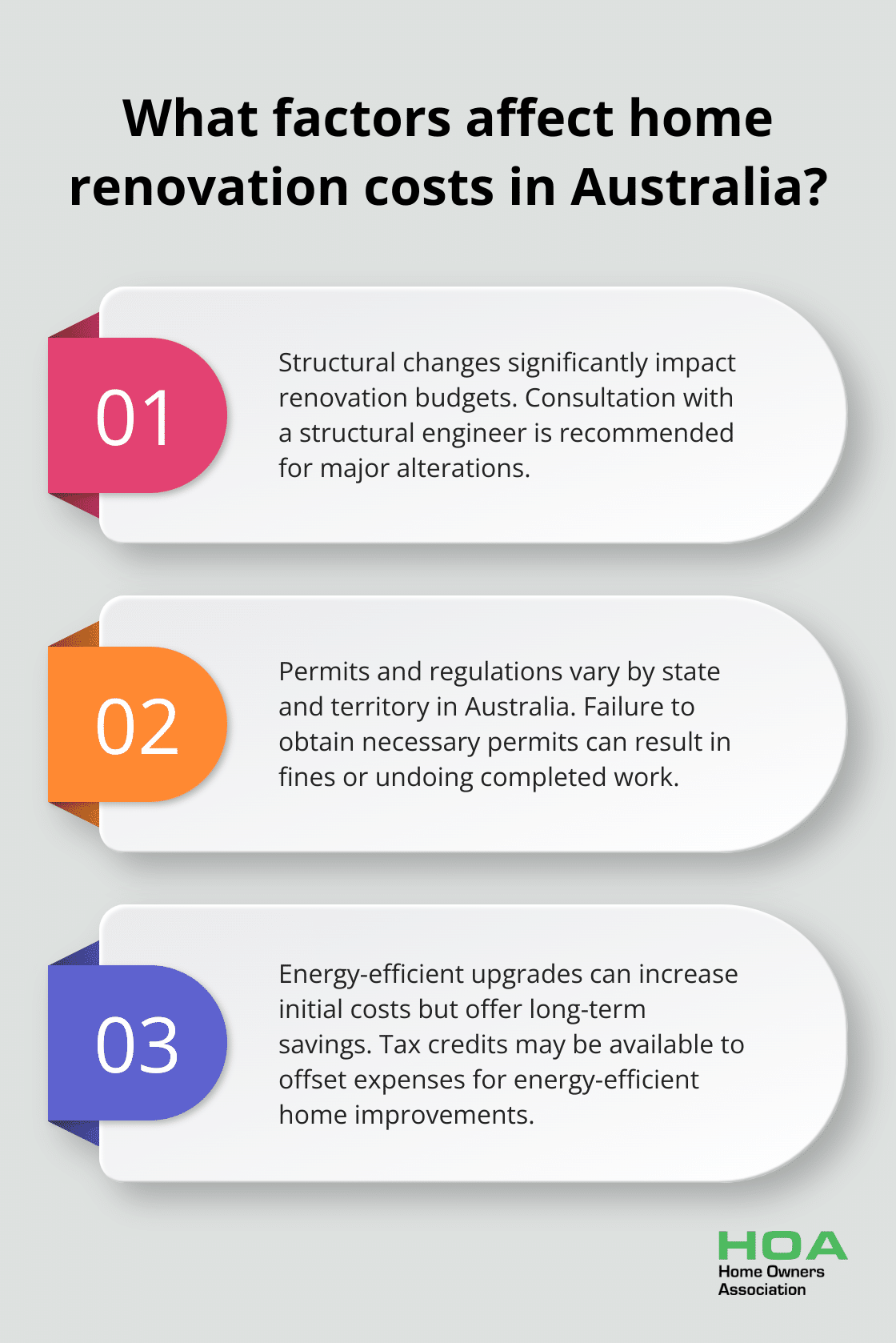
What Drives Renovation Costs?
At Home Owners Association, we’ve identified key factors that significantly impact costs. Understanding these elements will help you budget accurately and avoid unexpected expenses.
Material Costs and Quality Choices
The materials you select can make or break your budget. High-end finishes like marble countertops or custom cabinetry quickly escalate costs. For example, basic laminate flooring might cost $20-$50 per square meter, while hardwood flooring can range from $60-$300 per square meter. We recommend you explore different material options and their price points early in your planning process.
Labor Expenses and Contractor Selection
Labor typically accounts for 30-50% of total renovation costs, depending on the type of building, complexity of finishes, and location. Skilled tradespeople command higher rates, but their expertise often results in better quality work. When you select contractors, don’t automatically go for the cheapest quote. Look for a balance of fair pricing, experience, and positive reviews. Getting at least three detailed quotes helps you understand the market rate for your specific project.
Hidden Costs and Contingencies
Unexpected issues often arise during renovations, especially in older homes. Asbestos removal, electrical rewiring, or structural repairs can add thousands to your budget. We advise you to set aside 5-10% of your total budget for contingencies. This buffer can determine whether your project completes or stalls due to unforeseen expenses.
Regional Price Variations
Location plays a significant role in renovation costs. Urban areas generally have higher labor and material costs compared to rural regions. For instance, a bathroom renovation in Sydney might cost 20-30% more than the same project in a regional town (this difference can be substantial). Research local prices and factor in these regional differences when you estimate your project costs.
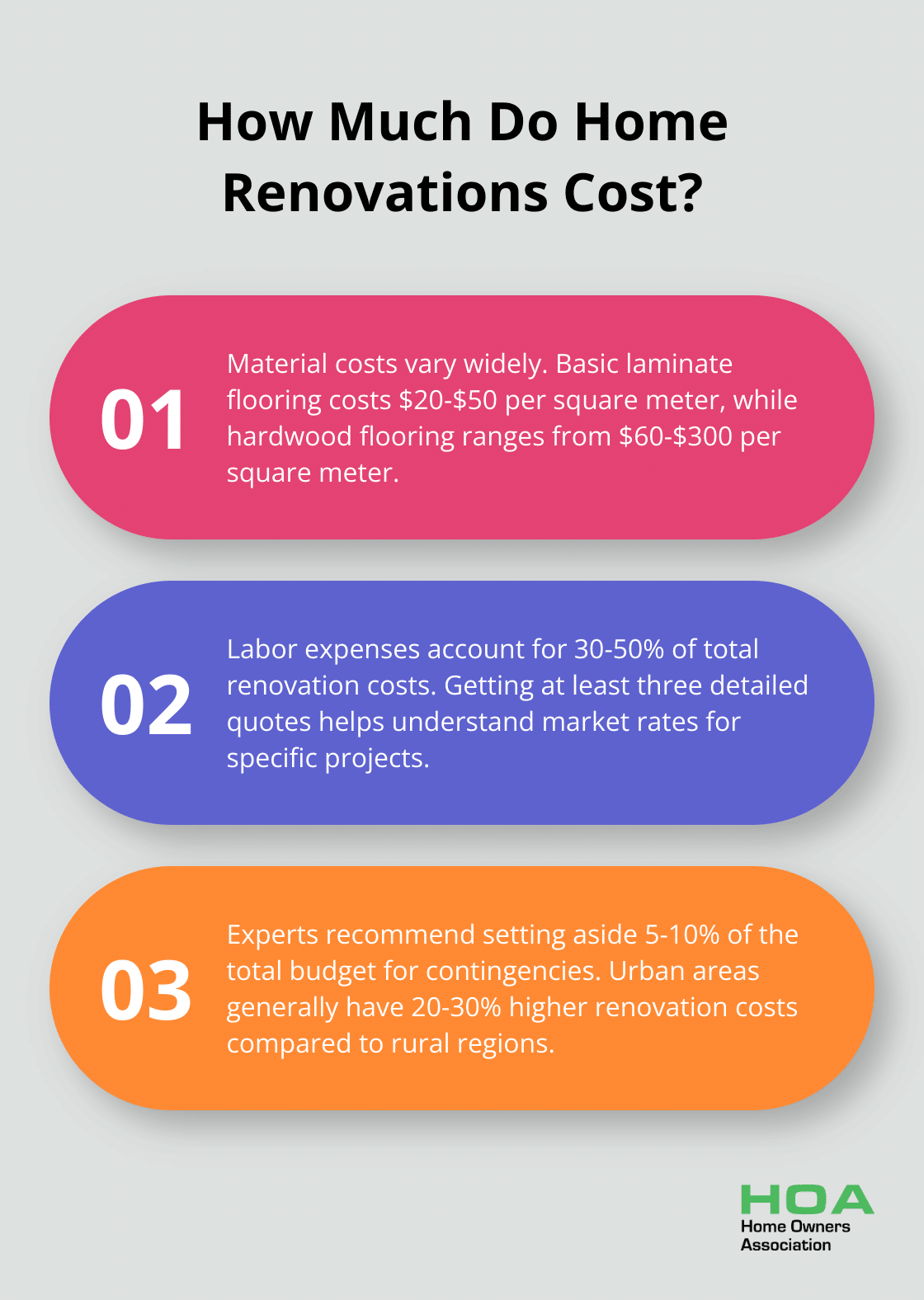
Understanding these cost factors leads to more accurate budgeting and smoother renovations. Considering materials, labor, hidden costs, and regional variations equips you to plan your project finances effectively. Now, let’s explore practical tips for estimating costs accurately.
How to Estimate Renovation Costs Like a Pro
At Home Owners Association, we know that accurate cost estimation is key for successful home renovations. Here’s how you can estimate your renovation costs like a professional.
Gather Multiple Quotes
Don’t settle for a single quote. Contact at least three reputable contractors for detailed estimates. This approach provides a realistic price range and helps you identify any outliers. When you compare quotes, look beyond the bottom line. Pay attention to the scope of work, materials specified, and proposed timeline. A comprehensive quote should break down costs for materials, labor, permits, and potential contingencies.
Use Online Cost Calculators
Online renovation cost calculators can offer a solid starting point for your estimates. These tools often use data from thousands of projects to generate ballpark figures based on your location and project scope. However, keep in mind that these are just estimates (they may not account for unique features of your home or recent market fluctuations). Use them as a guide, not a definitive answer.
Create a Detailed Budget Spreadsheet
A comprehensive budget spreadsheet is essential for cost estimation. Start by listing every aspect of your renovation, from big-ticket items like appliances down to small details like light switch covers. Research the cost of materials and include labor estimates for each task. Don’t forget to add often-overlooked expenses like permit fees, waste removal, and temporary accommodation if needed.
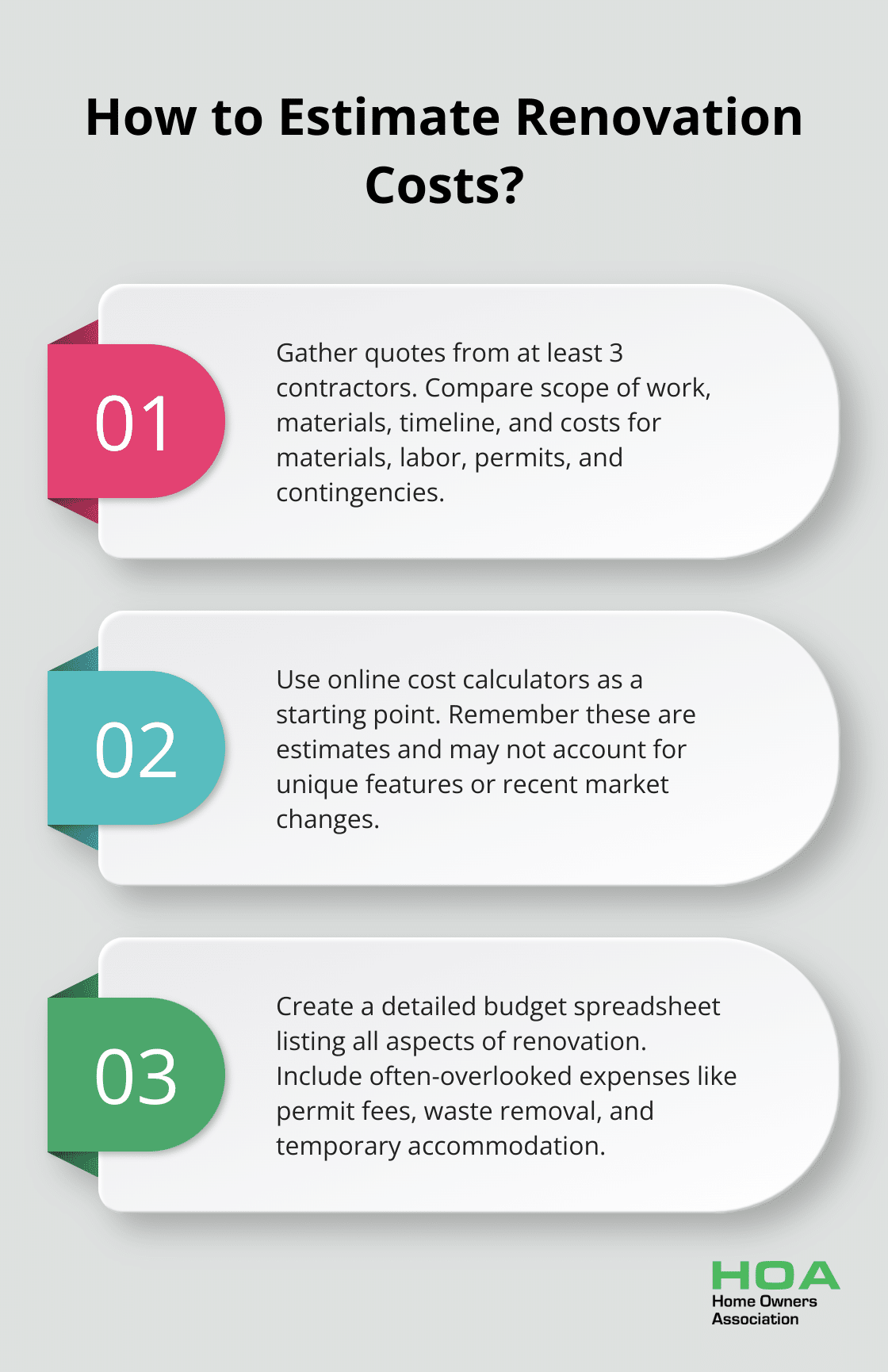
As your project progresses, update your spreadsheet regularly. This practice helps you track your expenses and identify areas where you might need to cut back or can afford to splurge.
Plan for the Unexpected
Surprises are almost guaranteed in renovation projects. That’s why we at Home Owners Association always advise our members to include a buffer in their budget. Try to augment the project budget by a straight percentage based on the data from past projects for unexpected expenses. This buffer can cover issues like discovering faulty wiring, needing additional structural support, or dealing with water damage uncovered during the renovation process (which can be quite common in older homes).
It’s always better to overestimate and have money left over than to run out of funds mid-project. These practical tips will help you create an accurate and comprehensive renovation budget, ensuring your project stays on track from start to finish.
Final Thoughts
Accurate cost estimation forms the foundation of successful home renovations. You must define your project scope, understand cost factors, and implement practical estimation techniques. A home renovation cost estimator provides a valuable starting point, but you should also gather multiple quotes and create a detailed budget spreadsheet. These steps will give you a comprehensive view of your project’s financial requirements.
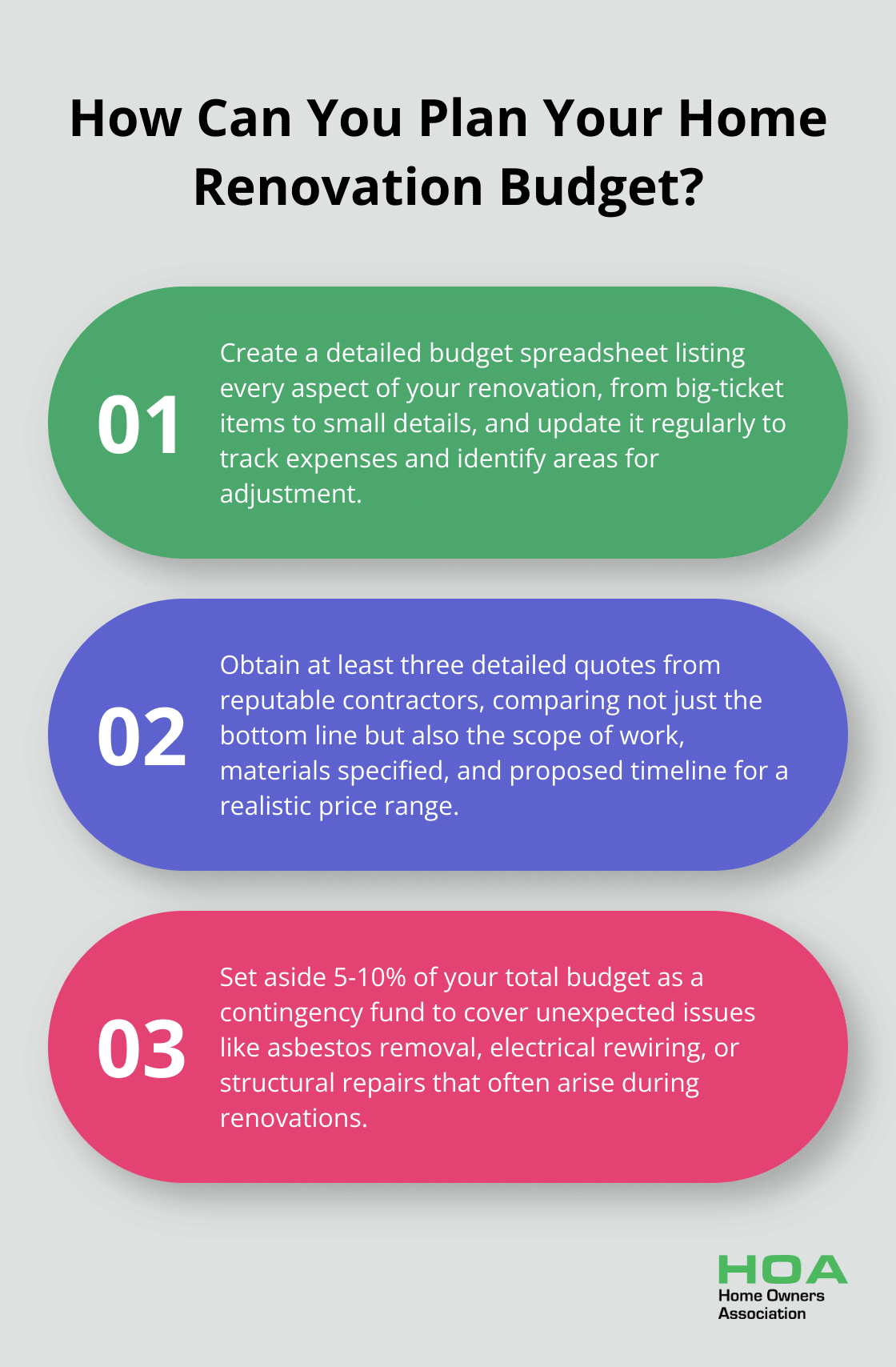
We at Home Owners Association have observed how thorough planning and research lead to successful renovations. Our members benefit from trade pricing, discounts, and expert advice, which can make renovation journeys more manageable. You should include a buffer for unexpected expenses in your budget (this safeguard can prevent project stalls).
With the right approach to cost estimation and support from organizations like ours, you can start your renovation project confidently. You will prepare yourself well for the challenges and rewards ahead. Visit Home Owners Association to learn how we can assist with your home renovation journey.





